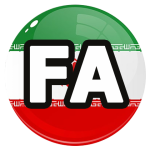Learn About Spain
Learn About Beautiful Spain:
On this page you can learn about Spain, its geography, history, culture, economy and society. Spain, a country that sits on the Iberian Peninsula in southwestern Europe, is a captivating blend of rich history, diverse cultures, and vibrant landscapes.
From the sun-kissed beaches of the Costa del Sol to the majestic peaks of the Pyrenees, Spain is a nation that beckons travelers with its unique charm.
This comprehensive guide aims to delve into the various facets that make Spain a fascinating destination, covering its geography, history, culture, economy, and society.
Geography of Spain:
Lean about Spain and its greography, covering an area of approximately 505,992 square kilometers, is the fourth-largest country in Europe. It is bordered by Portugal to the west, France to the northeast, Andorra to the north, and shares maritime borders with Morocco and Algeria in the south.
Regions and Provinces:
Spain is divided into 17 autonomous regions, each with its own distinctive character. These regions are further subdivided into provinces, totaling 50 in number. Notable provinces include Andalusia, Catalonia, Madrid, and Valencia.
Andalusia:
Located in the southern part of Spain, Andalusia is renowned for its stunning beaches, flamenco music and dance, and historic cities like Seville, Granada, and Cordoba. The region boasts a diverse landscape, from the arid plains of Almería to the mountainous terrain of Sierra Nevada.
Catalonia:
Situated in the northeast, Catalonia is known for its unique cultural identity, including the vibrant city of Barcelona. The region features a blend of modernist architecture, picturesque beaches, and the rugged beauty of the Pyrenees.
Madrid:
The capital city and an autonomous community, Madrid is the geographical center of Spain. It serves as a hub of cultural and economic activity, with iconic landmarks such as the Royal Palace and the Prado Museum.
Valencia:
On the eastern coast, Valencia is celebrated for its futuristic architecture, the lively Las Fallas festival, and the stunning City of Arts and Sciences. The region is also a major player in Spain’s agricultural industry.
History of Spain:
Pre-Roman Period:
Learn about Spain’s history dates back to ancient times, with influences from the Iberians, Celts, and Phoenicians. The Carthaginians and Romans subsequently left their mark, shaping the region’s culture and infrastructure.
Moorish Rule:
From the 8th to the 15th century, much of Spain was under Moorish rule. This period saw significant advancements in science, art, and architecture, with landmarks like the Alhambra in Granada standing as testament to this era.
Reconquista:
The Reconquista, a series of Christian campaigns, aimed to reclaim the Iberian Peninsula from Islamic rule. It concluded in 1492 with the Catholic Monarchs, Ferdinand II of Aragon and Isabella I of Castile, capturing Granada.
Spanish Empire:
The 16th century marked the peak of Spain’s power with the establishment of a vast overseas empire, including territories in the Americas, Asia, and Africa. This period is known for economic prosperity but also economic challenges.
Golden Age and Decline:
The 17th century, often referred to as the Spanish Golden Age, witnessed cultural brilliance with figures like Cervantes and Velázquez. However, the empire entered a phase of decline in the 18th century.
20th Century and Modern Spain:
The 20th century brought political upheaval, including the Spanish Civil War (1936-1939) and the subsequent Francoist dictatorship. The transition to democracy in the late 1970s paved the way for modern Spain.
Culture of Spain:
Language and Literatures
Spanish, or Castilian, is the official language, but Spain is also home to regional languages like Catalan, Galician, and Basque. Spanish literature has produced globally acclaimed authors such as Miguel de Cervantes.
Arts and Architecture:
Spanish art spans from the masterpieces of Goya and Velázquez to the contemporary works of Salvador Dalí and Pablo Picasso. The architectural wonders of Antoni Gaudí in Barcelona and the medieval charm of Toledo showcase Spain’s diverse artistic heritage.
Music and Dance:
Flamenco, a passionate and expressive art form, originated in Andalusia and has become synonymous with Spanish culture. Traditional dances like the Flamenco and regional celebrations, such as the Running of the Bulls in Pamplona, are integral to Spain’s cultural identity.
Festivals and Traditions:
Spain is renowned for its vibrant festivals, each region celebrating its unique traditions. La Tomatina in Buñol, Semana Santa (Holy Week) processions, and the Feria de Abril in Seville are just a few examples of the lively events that define Spanish culture.
The Growing Economy:
Economic Overview:
Learn about Spain and its economy. As of the latest data, Spain has the 13th-largest economy globally. It is a member of the European Union, and the euro is its official currency. Spain has a diverse economy with significant contributions from sectors like tourism, manufacturing, and agriculture.
Tourism:
Spain is a global tourism hotspot, attracting millions of visitors annually. The country’s beautiful beaches, historic landmarks, and vibrant culture make tourism a vital component of its economy.
Agriculture:
Spain is a major producer of agricultural products, including fruits, vegetables, and olive oil. Regions like Andalusia and Valencia are key contributors to the country’s agricultural output.
Manufacturing:
The manufacturing sector, particularly automotive and aerospace industries, plays a crucial role in Spain’s economy. The country is home to major automobile manufacturers and has a robust export-oriented manufacturing base.
Services and Technology:
The services sector, including finance and technology, is a growing force in Spain’s economy. Cities like Barcelona and Madrid are emerging as tech hubs, attracting startups and multinational companies.
Society of Spain:
Social Structure:
Spain is known for its strong family ties, and family plays a central role in social life. The traditional siesta, an afternoon nap, is indicative of the importance of leisure and family time in Spanish culture.
Religion and Festivities:
Catholicism has historically been a dominant religion in Spain, influencing its traditions and festivities. Festivals, often with religious roots, are celebrated with enthusiasm and are an integral part of Spanish social life.
Education and Healthcare:
Spain has a comprehensive education system, and education is mandatory for children between the ages of 6 and 16. The country also has a publicly funded healthcare system that provides medical services to residents.
Diversity and Regional Identity:
While there is a strong sense of national identity, Spain is also characterized by regional diversity. Each autonomous community takes pride in its unique culture, traditions, and sometimes even language.
Contemporary Challenges:
Modern Spain faces challenges like unemployment, particularly among the youth, and regional tensions. Efforts are ongoing to address these issues and foster a more inclusive and sustainable society.
Conclusion:
In conclusion, with this comprehensive guide you can learn about Spain and all it’s features. Spain is a multifaceted nation with a rich tapestry of geography, history, culture, economy, and society. Its diverse landscapes, from the bustling cities to the picturesque countryside, offer a glimpse into the country’s unique character.
The historical journey from Moorish rule to the present-day democratic state has shaped Spain into a captivating blend of tradition and modernity. As Spain continues to evolve, it remains a beacon of culture, warmth, and hospitality, inviting the world to explore its wonders.

